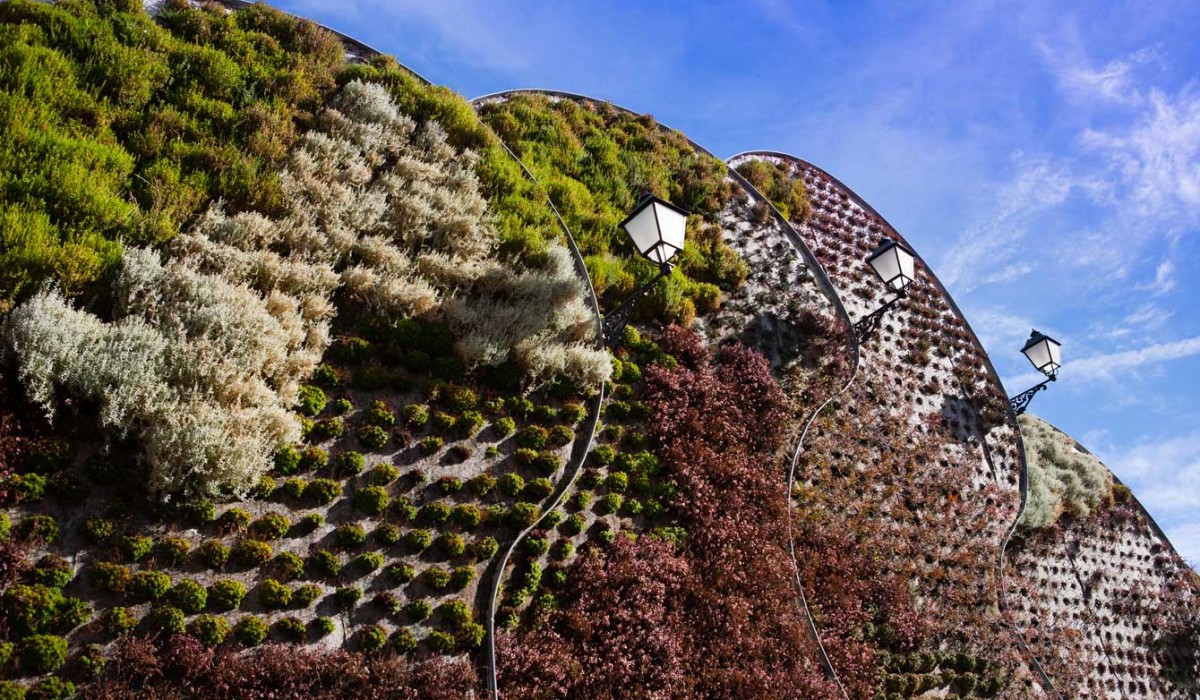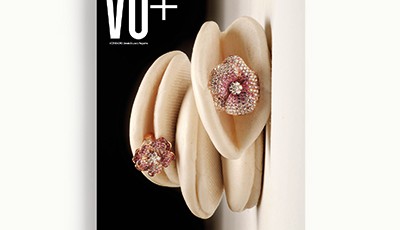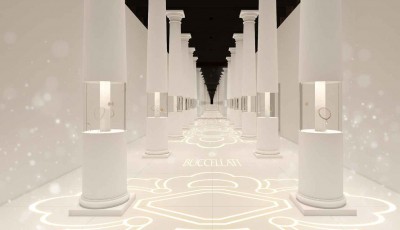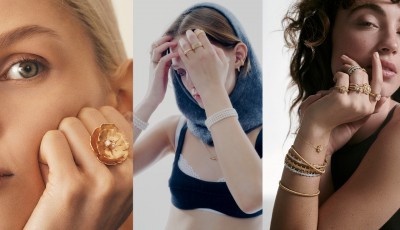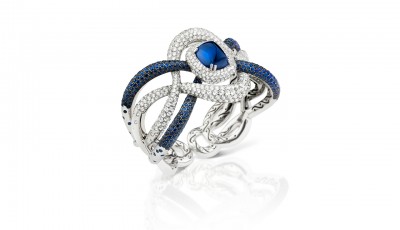Secret Garden
A new unpredictable trend about green design: "sauvage" and irregular, colored and explosive, mysterious and intriguing. In jewelry, the trend is hot but you can see it also in fashion, in architecture, in design and in food.
Today, ethical reasons are no longer just a mere accessory and sectors which were previously impervious to the development of taste such as jewelry, are showing an increased appreciation of good intentions.Sustainable, traceable and natural raw materials establish themselves as guiding criteria within the assessment of an object or service, even if they also include irregular shapes or often increased costs and the impact of a cheaper-looking image according to standard canons. Prime examples include organic sustainable food and natural cosmetics, solar energy plants, organic architecture and clothing made from eco-friendly fibers: vertical gardens flourish on buildings and vegetable patches spring up in people’s back gardens.
Within the jewelry industry there is a proliferation of charities for children in need and organizations supporting the fight against disease, but also increased efforts toward the protection of the environment. International ethical laws governing the jewelry trade impose the adherence to certain parameters which do not compromise the transparency of production processes, and therefore prohibit raw materials such as ivory and conflict diamonds, but the real change can be seen in aesthetic canons: previously, stones had to be cut perfectly symmetrically, now asymmetry is also acceptable, in the past absolute clarity was a must, now opalescence is a byword for sobriety and imperfections are a mark of the unique nature of a stone.This perspective explains the success of the organic, encrusted jewelry created by the British designer Ornella Iannuzzi. She has seduced many with her pyrite crystals from the French Alps, left in their rough natural state and assembled within gold nuggets, or Luna Scamuzzi’s molten gold pieces, which harden into a ring shape around precious stones. The same thing takes place within many contemporary designs: handles modeled on the cast of a hand, biomorphic chairs, ergonomic kitchens and diffusion lamps such as Cosmic Leaf by Ross Lovegrove for Artemide are analogous with glass and oxidized metal body ornaments by Giorgio Vigna or multi-finger rings by Maria Vittoria Paolillo. Many designer jewelry pieces seem to possess primal power and acquire value thanks to these effects.
[ts_row] [ts_one_third]
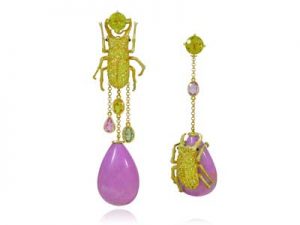 Lydia Courteille’s 'Sweet&Sour' earrings
Lydia Courteille’s 'Sweet&Sour' earrings
[/ts_one_third]
[ts_one_third]
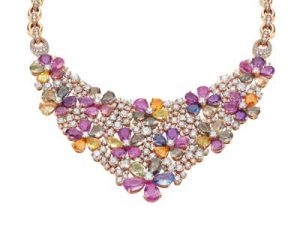 necklace from the Bulgari ‘Giardini Italiani’ High Jewelry collection
necklace from the Bulgari ‘Giardini Italiani’ High Jewelry collection
[/ts_one_third] [ts_one_third]
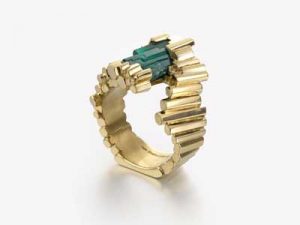 'L'Exceptionnelle Emeraude' ring by Ornella Iannuzzi
'L'Exceptionnelle Emeraude' ring by Ornella Iannuzzi
[/ts_one_third] [/ts_row]
Just as within organic architecture, space must not be modified around the aim and the architect must not impose his will on the environment but should be influenced by it, as in Barbara Uderzo’s zero-impact necklace where the beads are made of chocolate and her rings house grassy meadows. Lydia Courteille’s rather darker vision presents life-size gold beetles climbing up earrings and flowers are created by the colors of pavé-set precious stones. Naturally, this trend can lead to extreme behavior: the term ‘orthorexia’ refers to people who display a pathological obsession with healthy, strictly low-calorie, organic and eco-friendly friendly. The more fanatical among them (but not vegan) have decided on insects as the new frontier of sustainable food, and have created modest media successes such as Giulia Tacchini’s cricket-flour biscuits.
[ts_row] [ts_one_third]
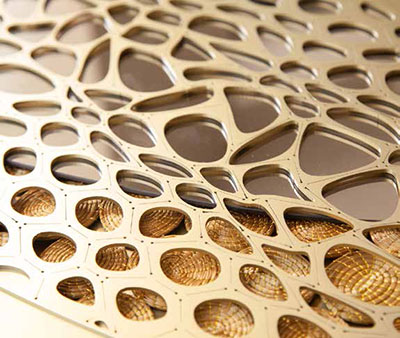 Though it may appear
Though it may appear
made from gold, Guto
Requena’s ‘Golden
Harvest’ room divider
is actually made from
capim dourado (golden
grass), Brazil’s native plant.
Below, material samples
from Formafantasma's
'Botanica' collection.
[/ts_one_third] [ts_one_third]
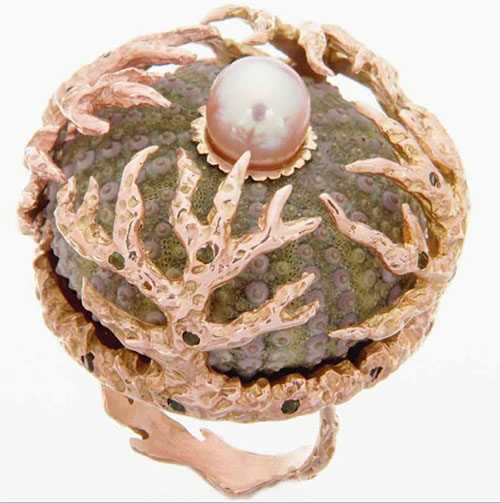 The 'Merveille Oceanique' ring by Ornella Iannuzzi
The 'Merveille Oceanique' ring by Ornella Iannuzzi
[/ts_one_third] [ts_one_third]
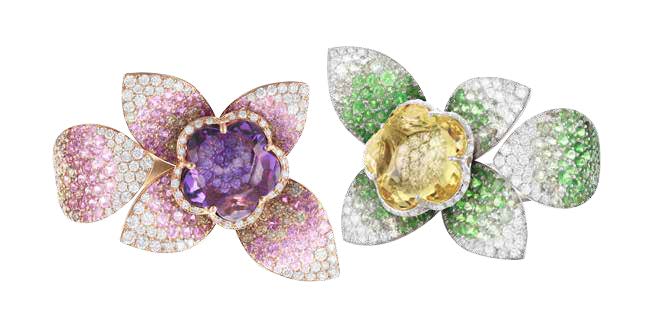 'Giardini Segreti Haute Couture' rings by Pasquale Bruni
'Giardini Segreti Haute Couture' rings by Pasquale Bruni
[/ts_one_third] [/ts_row]
At the same time, new terms have been coined, such as 'passive home', for an energy-saving house or one which produces energy as it is perfectly insulated from external elements, 'bioclimatic home’, which does not consume energy or produces energy by harnessing external elements such as wind and sunlight, and 'sick' buildings which are not integrated with their surroundings.
The prophets of wild gardening, in which plants grow freely within their eco-system of insects, shudder at the sight of a weed-free flower bed and orthodox natural-designers take a sledge-hammer to rulers and set squares. It is up to the masters to restore balance to the debate, for example Renzo Piano, who has always elegantly produced architecture in harmony with its surrounding environment, will be celebrated this year by the specialist Archdaily.com website with the Building of the Year 2016 award for the Intesa San Paolo building in Turin, and an exhibition on the 'Piano Method' which just closed in Paris at the Cité de l’Architecture et du Patrimoine. Using a similar sense of restraint and just the right amount of surprise, both Dior Joaillerie and Pasquale Bruni interpreted the natural trend by focusing on the richness of flowers: the resulting bouquets explore volumes and nuances but remain anchored to the ritual, delicate representation of the theme. It is easy to imagine, in fact, that the rose-shaped rings designed for Dior by Victoire de Castellane, despite their avant-garde volumes and construction techniques, might also have appealed to Marie-Antoniette: the rules of beauty change and are affected by various influences, to be sure, but only relatively so if the object is in a certain pricebracket •
Text Ilaria Danieli


